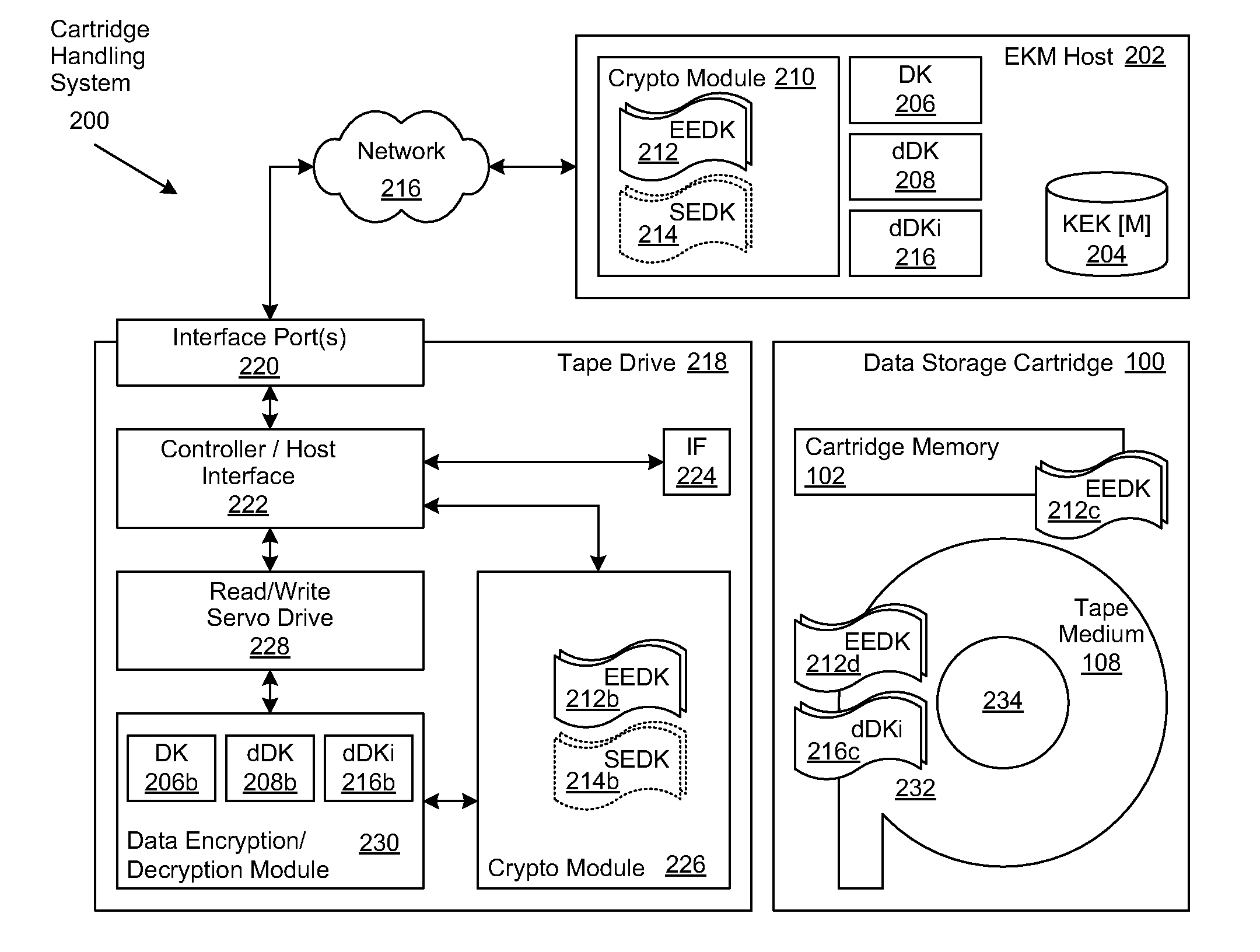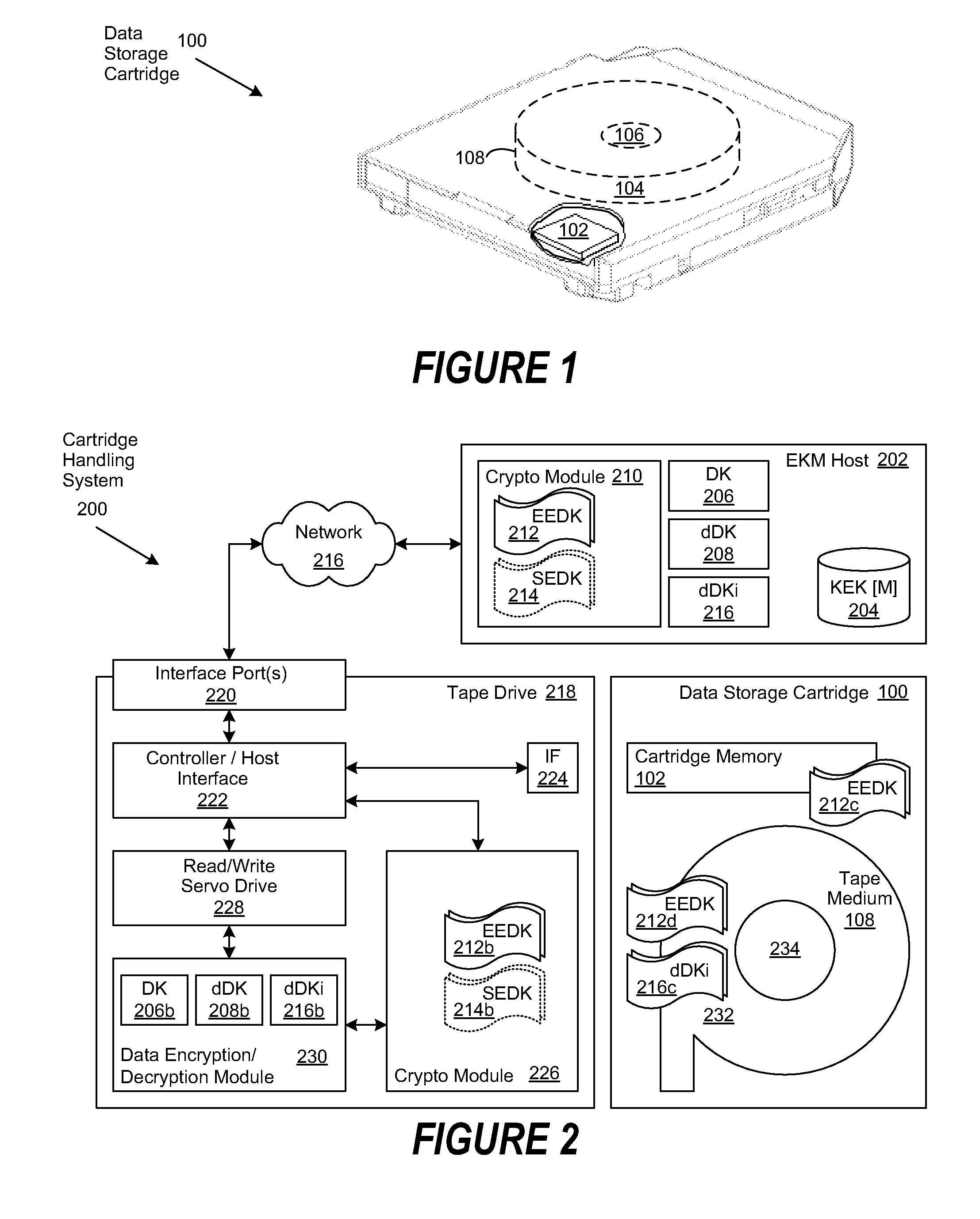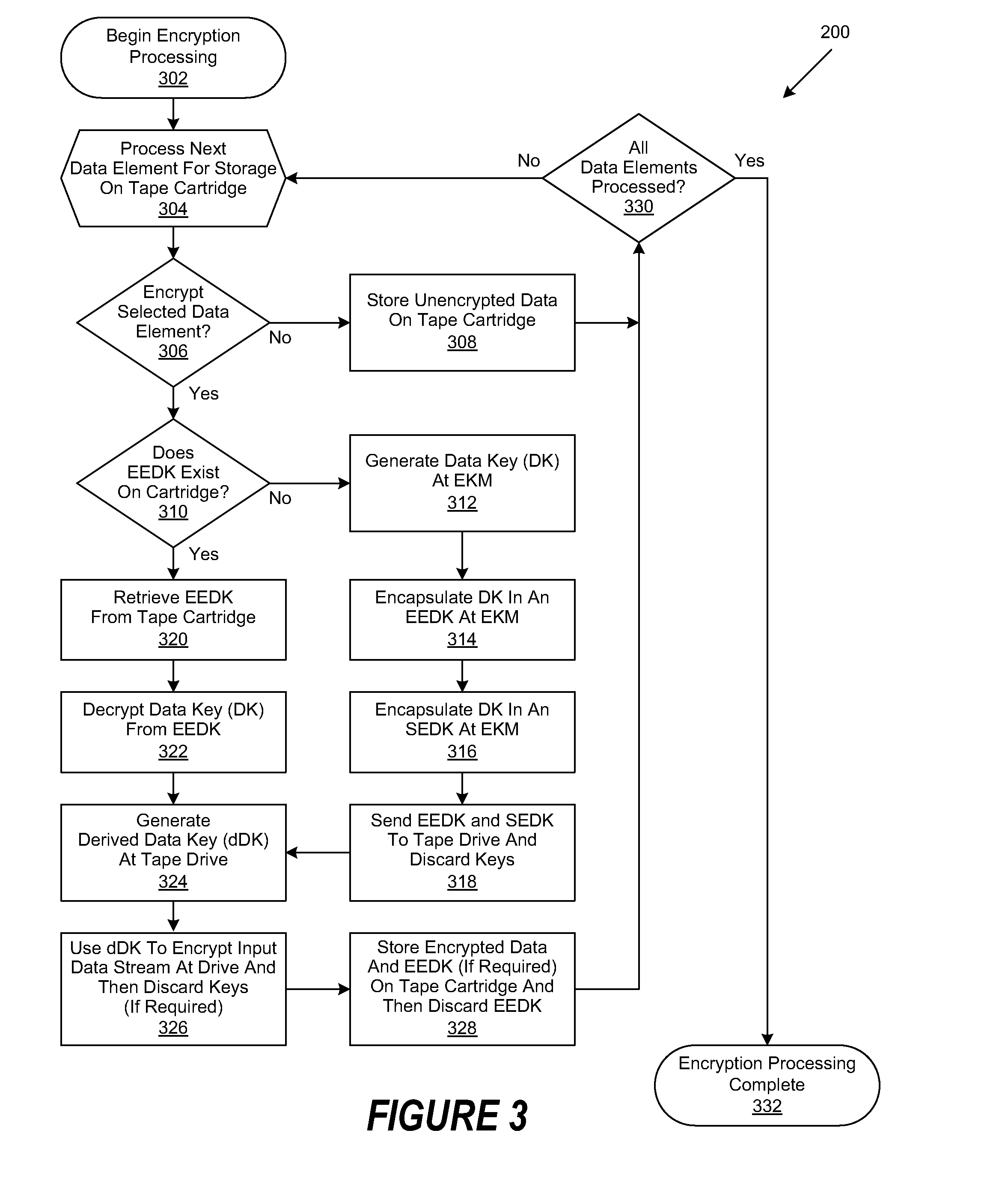Use of Indirect Data Keys for Encrypted Tape Cartridges
- Summary
- Abstract
- Description
- Claims
- Application Information
AI Technical Summary
Benefits of technology
Problems solved by technology
Method used
Image
Examples
Embodiment Construction
[0028]A method, system and program are disclosed for enabling selective access to multiple users' encrypted data in a removable storage medium, such as single tape storage cartridge. In selected embodiments of the invention, a unique, derived key is generated for each user's data by performing cryptographic operations on a combination of a common base key and metadata related to the data to be encrypted (e.g. its total block count). The base data key may be stored external to the tape cartridge, and in some embodiments base data key storage may only be external to the tape cartridge and in other embodiments it might be stored both external to and on the tape cartridge. If it is not stored external to the tape cartridge, then it must be stored on the tape cartridge. To store the base data key on the cartridge, it must be encrypted or wrapped with one or more encryption keys (a.k.a. key encrypting keys) to form one or more encryption encapsulated data keys (EEDKs). In this case key ma...
PUM
 Login to view more
Login to view more Abstract
Description
Claims
Application Information
 Login to view more
Login to view more - R&D Engineer
- R&D Manager
- IP Professional
- Industry Leading Data Capabilities
- Powerful AI technology
- Patent DNA Extraction
Browse by: Latest US Patents, China's latest patents, Technical Efficacy Thesaurus, Application Domain, Technology Topic.
© 2024 PatSnap. All rights reserved.Legal|Privacy policy|Modern Slavery Act Transparency Statement|Sitemap



